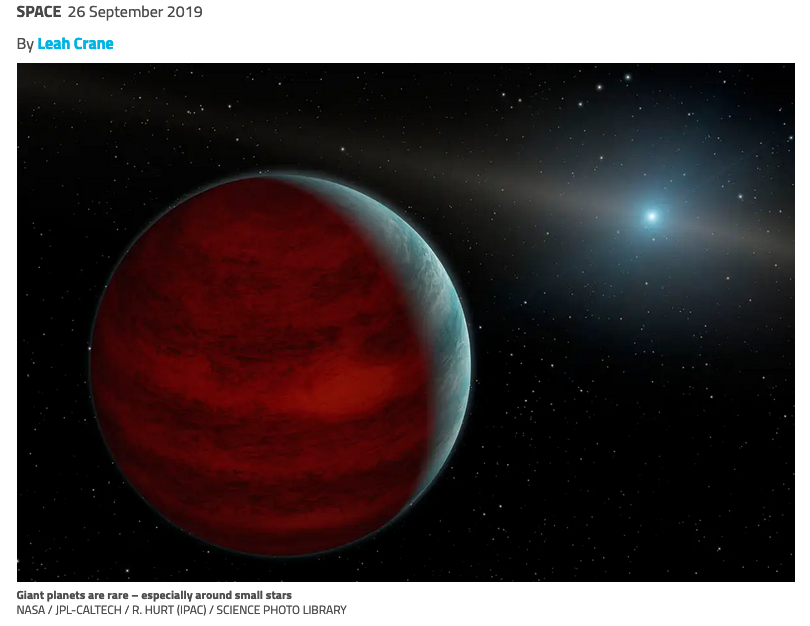
Astronomers have spotted an enormous planet orbiting a tiny star about 31 light years away. It is so big that it can’t have formed in the way that we think most planets do.
Juan Carlos Morales at the Autonomous University of Barcelona in Spain and his colleagues spotted the planet, called GJ 3512 b, using a technique called the radial velocity method. This takes advantage of the fact that as a planet orbits its star, the star moves slightly in a way that allows astronomers to determine the planet’s mass and orbit.
Using more than two years of observations with the CARMENES exoplanet survey in Spain, the researchers found that GJ 3512 b is at least 46 per cent as massive as Jupiter and orbits its star once every 204 days. The star itself is only 12 per cent as massive as our sun – or about 126 times the mass of Jupiter.
“With the first observations, it looked like two stars orbiting each other,” says Morales. More observations clarified that it was a planet, but it was unexpectedly large.
“Giant planets are fairly rare in general, but as you go to lower and lower mass stars, they become even rarer,” says Greg Laughlin at Yale University. “The processes that lead to the formation of these planets is not well understood.”
The usual method of planet formation is called core accretion. In this process, a planet slowly forms as dust and pebbles clump together in the disk of debris surrounding a star, growing its core until it is big enough to hold on to a gas atmosphere by virtue of its own gravity. But when Morales and his colleagues ran simulations of GJ 3512 b, they found it couldn’t have been formed in that way.Is Mars habitable? Javier Martin-Torres at New Scientist Live
Instead, they say it was probably formed in a process called gravitational instability, where a disk of gas spontaneously collapses to form the core of a planet all at once. “This is the first time that we have a clear detection of a planet where the only possible way to explain it is gravitational instability,” says Morales. That may mean that the process of planet formation is more diverse than we thought, and it is possible that there are more giant planets like this than we previously envisaged, he says.
Journal reference: Science, DOI: 10.1126/science.aax3198
Read more: https://www.newscientist.com/article/2217808-an-unexpectedly-enormous-planet-is-orbiting-a-tiny-star/#ixzz60jIrwcVR
